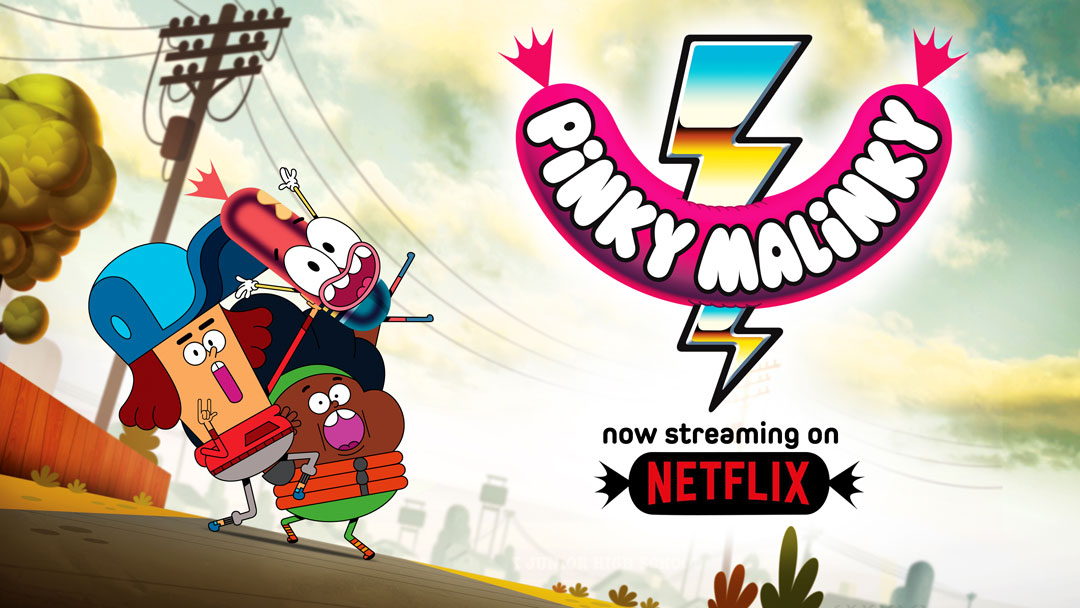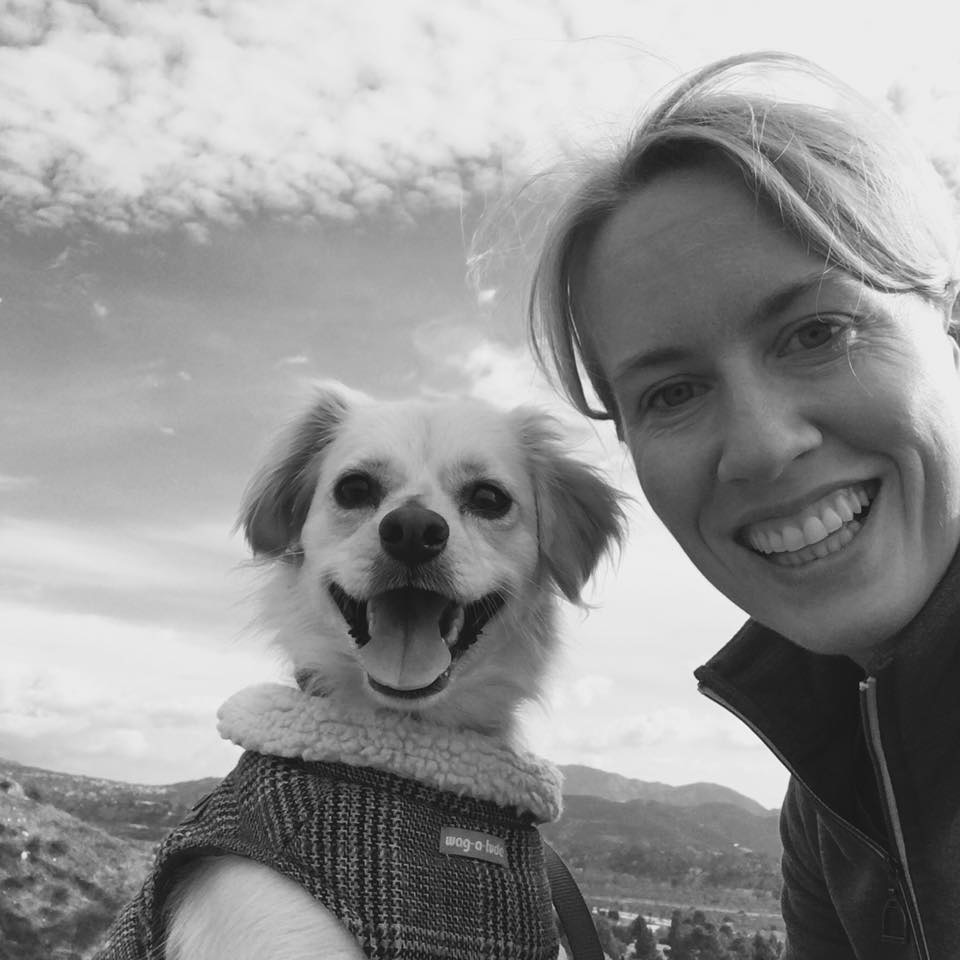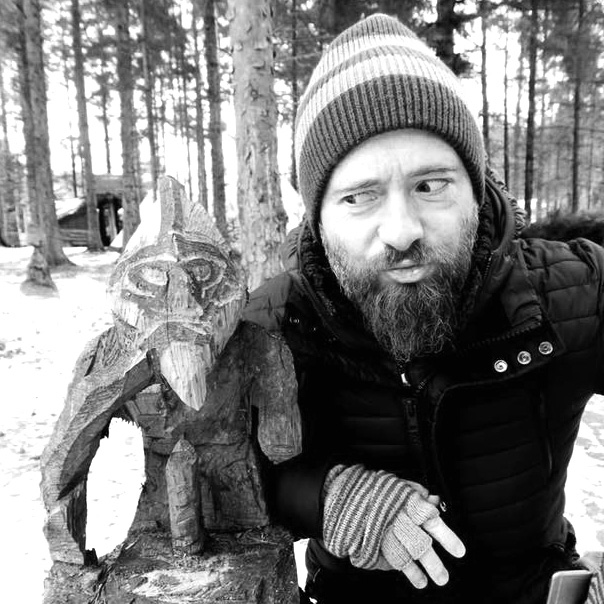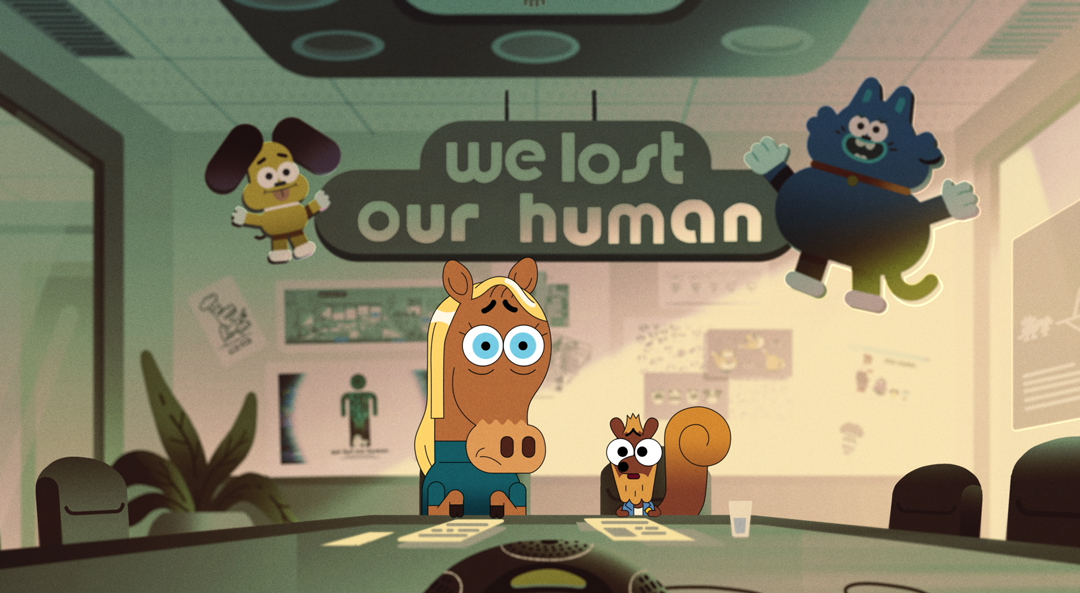The Many Possibilities of We Lost Our Human
With Rikke Asbjoern and Chris Garbutt

We Lost Our Human is the story of indoor pets Pud and Ham who wake one morning to find that their owner has disappeared. In fact, there has been a glitch in the universe, and all the humans have disappeared. In a desperate bid to find their owner and return the world to normal, they venture into the outside world to make things right.
If that’s the path you choose.
WeAnimate Magazine met the creators Rikke Asbjoern and Chris Garbutt at WeAnimate Day 2023 at the National Film School in Denmark, to talk about the immense process of inventing a new paradigm in interactive storytelling.
In fact, We Lost Our Human is an interactive comedy romp through a variety of bizarre universes, and the viewer controls the outcome, choose-your-own-adventure style. Starring the voices of Ben Schwartz and Ayo Edebiri, along with Lauren Tom, Jon Glaser, and Henry Rollins, the viewer can play through over 200 minutes of content.
The scale of this project was incredibly ambitious. In 2018, Netflix attempted something similar with the Black Mirror episode Bandersnatch, which was changed from an episode to a standalone special due to the complexity of production. The complexities of Bandersnatch also led Netflix to develop an interactive production management tool called Branch Manager, which continued to develop and was eventually used for We Lost Our Human.
For writers/directors/creative team Rikke Asbjoern and Chris Garbutt, working on ambitious projects is nothing new. The two had previously co-created Pinky Malinky for Nickelodeon and Netflix, which earned them an Annie nomination in 2020, as well as working on numerous animated series, shorts, music videos, and more. For Rikke and Chris, We Lost Our Human was an opportunity to take their signature humor and over-the-top cartoon action to a whole new level, and they embraced the challenge.

© Netflix
The We Lost Our Human Creative Process
We Lost Our Human was an original concept that Rikke and Chris pitched to Netflix, having heard that the network was looking for interactive projects. Although they hadn’t produced a non-linear film before, they were attracted to the challenge and the creative possibilities, and their experience and past successes got them the green light. Netflix was immediately on board with the concept and the characters and supported the project completely.
CG: We need to give a lot of credit to Netflix for trusting us with this project. They could have forced a specific production pipeline and setup on us, but they allowed us to create our own. That trust was really important.
RA: Because that’s definitely not always the case.
CG: Absolutely! And if we had less experience, they may have had to take more control, and then it might not have worked.
To write We Lost Our Human, Rikke and Chris first developed a single plot that they called “the golden path”, and then began to look for places where the story could branch and diverge. They developed this framework with a team of themselves, two writers, and a script coordinator, in a room lined with Post-it Notes to track the various branches.
In all, there are approximately 4 complete stories, along with smaller branches, easter eggs, and divergences that add up to over 87 billion possible variations.

The Story Room of We Our Human. @Netflix
CG: The whole project was interesting and exciting, but the writing process was the most fun. I can’t believe they allowed us to spend that kind of time on writing alone. It was just the four of us and a script coordinator, so we formed an agile unit. It was 7-8 months in writing total.
RA: It’s weird to think about it now, because it was before Covid and we were all crammed in the same room with each other for all that time. Thankfully the way that we decided to approach the writing turned out to be the perfect way. I think we were just so lucky to already have so much experience under our belts, because we had been in so many different productions and done so many different things already. We’d worked on commercials and music videos and shows and everything, so we already had a good understanding of what this might become.
CG: We walked into it with our eyes open, and we were careful about setting up the production and pipeline. We brought in our own line producer, Mani Bell, who we already knew and trusted, and we sat down and brainstormed all the things that could go wrong. We also spoke with Russell McLean, who was a producer on Bandersnatch. Although that project was live-action, there were similarities in our pipelines, and he was super helpful. We found it helpful to just talk to a lot of different people with interactive experience, who could highlight areas that we needed to look out for.
Using the Post-It Notes as a tool, the team recruited almost everyone to “play through” the story, telling them the plot, presenting the decisions, and then moving to the next branch. These verbal play-throughs allowed them to troubleshoot potential story problems and make sure the variations worked as expected.
Rikke and Chris were adamant that the interactivity of the story be engaging and satisfying to the audience. They wanted choices to feel meaningful and have consequences, so they consulted with interactive producers and other experts to make sure it worked. As a result, they created some basic “writing rules” for the show , including:

CG: We kept it in that Post-it Note form for as long as we possibly could as we kept pitching and pitching and refining it, and then we put it into outline form in a program called Branch Manager that Netflix developed for Bandersnatch. From there, the outline evolved into a script. Although the script was kind of locked, things did have to change a bit during storyboarding. And, of course, we like to give the actors a lot of free rein during voice recording, to let them riff on the lines… so it was only partially “locked”. The process of taking storyboards into the animatic involved so much more checking than you would have to do on a linear production. Because you have multiple different sequences coming into and out of multiple different sequences, you have to check all your hookups (camera hookups, screen direction, etc) and make sure things are all hooking up against all the different possibilities, and that takes a long time, both in the boards and in editing.
RA: The production was especially challenging for Jam Filled Entertainment, our animation studio, because they also had to figure out a whole new way of approaching things. It was a big challenge for us, but it was a big challenge for them too, because we could never really 100% sign off on anything until the very end when we were assembling all the pieces. We could never be sure that as some new piece came in, it made some other piece not work anymore. Nothing was locked ever. I mean, we didn’t make huge changes to what we had, but we had to get people to accept that things weren’t 100% locked, which isn’t how people are comfortable working. It was hard for people, but we just needed to maintain that little bit of flexibility.
CG: It was all about details. We weren’t going to go back and change entire arcs; we just had to make sure all the details lined up. We also had to be aware of budget, and not just make things and throw them out.
Despite the unique challenges posed by a non-linear film, Rikke and Chris emphasize that making great animation always comes down to the fundamentals.
CG: Learn story. It’s the most important thing. It’s great to understand how to make great visuals and great filmmaking, but learning character and story is sometimes even more important. Young people should really prioritize it.
RA: Especially if you want to make your own films. But even if you’re doing VizDev it gives you a bigger, more well-rounded understanding of how your work contributes to the overall story. Images that hold the narrative and have character are just more interesting to look at . Also, get insight into different departments and learn how things work and work together. Try to learn as much as you can about every part of the process; you are more likely to succeed if you have that kind of insight. Experience teaches you so much. You have to work in different departments and with different people. That takes time, and you can’t acquire it over just a few months, and it’s essential for being a good director.

The Path Ahead for Rikke and Chris
CG: It’s hard to answer specifically about our next projects, because the industry is in a funny place at the moment, so you have to navigate that. But there are a lot of things we want to do and are actively pitching. We’ve been talking to a lot of different people in different places and figuring out what’s the next big thing. We’ve been talking a lot about features, so I think that’s what we are heading towards.
RA: I think that’s what we would really like to do next, is to make a feature.
CG: We have landed on a few stories that are very personal for us, and a couple of them are very Nordic, so we are exploring those possibilities.
RA: It’s a big ! I hope we don’t go down the wrong path, since right now there are so many signs pointing in so many different directions… we just hope that people will watch We Lost Our Human and enjoy it.
Credits

Meet the Artist
Rikke Asbjoern
Rikke Asbjoern Biography
Rikke was born in the north of Denmark in 1979. In 1997 she became one of the youngest students to start at the Animation Workshop in Viborg, Denmark, and then after graduating in 1999 she moved to London to start drawing cartoons for a living!
In 2007 she started working at Cartoon Network Development Studio Europe in London, writing and directing her own animated TV show ideas, while also helping to develop a number of other projects, including the Cartoon Network show the Amazing World of Gumball.
After a gig as a feature Story Artist for DreamWorks Animation, she joined Nickelodeon Animation, where she, alongside fellow collaborator Chris Garbutt, was the Co-Creator, Executive Producer, Show-Runner and Voice Director of the hit Netflix/Nickelodeon animated series, Pinky Malinky, about a positively charged anthropomorphic hotdog sausage!

Meet the Artist
Chris Garbutt
Chris Garbutt Biography
Originally from Yorkshire in the north of England, Chris lives in sunny Los Angeles, and has also worked in London and Paris since graduating with a First Class degree in Graphic Arts and Illustration, from a slightly less sunny Leeds Metropolitan University in the UK.
Chris has a passion for comics and storytelling! He loves creating new worlds and characters that often begin life as silly doodles on post-it notes.
Chris’ clients include Aaardman Animations, Capstone Publishing, Cartoon Network, Disney, Dreamworks, Paramount, JibJab Media, Macmillan Children’s Books, Netflix, Nickelodeon, Rebellion, Scholastic, Titan Publishing Group and Walker Books.

About We Lost Our Human
We Lost Our Human, a new epic interactive special for Netflix, was released in March 2023. It’s about an indoor cat and dog who wake up to find that all humans have disappeared from Earth, including their own! Desperate to find their owner, these two homebound pets venture for the first time into outside world and discover strange mysteries, meet bizarre creatures, and maybe – with the audience’s help – save the universe along the way.
Stream it today on Netflix: https://www.netflix.com/dk/title/81004016
Collaborators

WeAnimate Magazine is dedicated to all the people who animate and make things, lines, and ideas come to life.
WeAnimate ApS is founded and owned by The Danish Animation Society (ANIS) www.anis.nu
Tell us what you think? Tell us at hello@weanimate.dk | #weanimate | our Privacy Policy